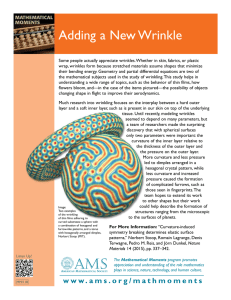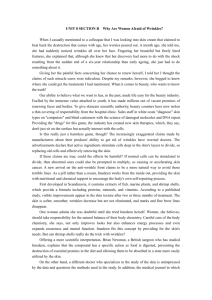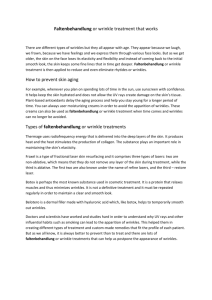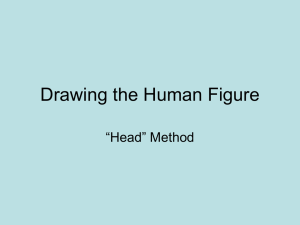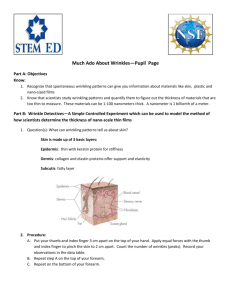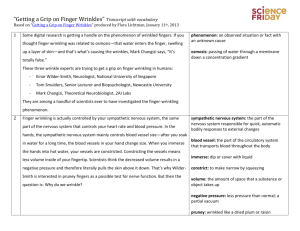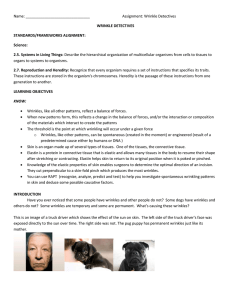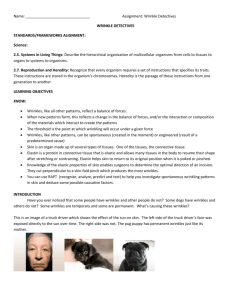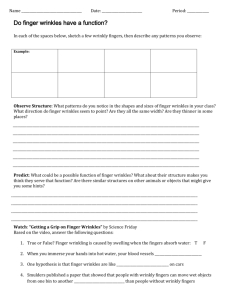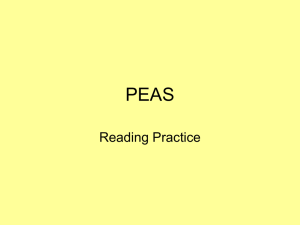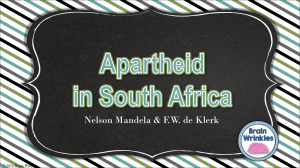Patterns
advertisement
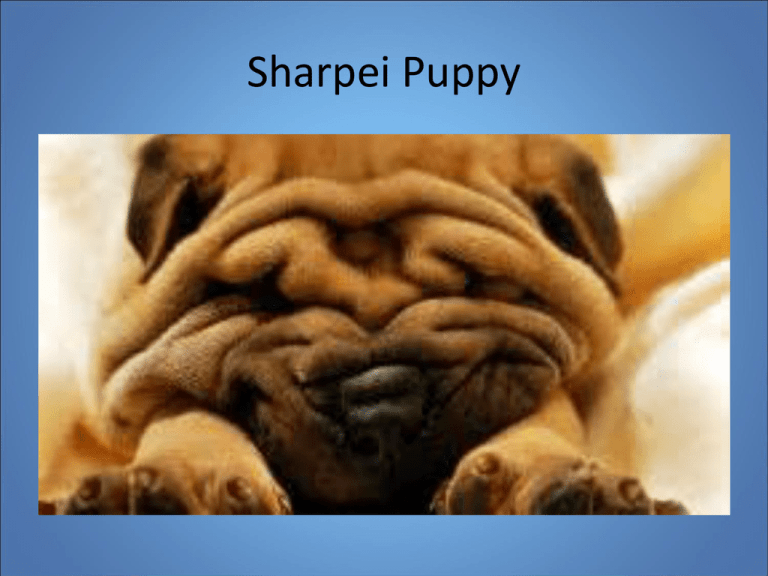
Sharpei Puppy The Nature of Science Science may be described as the attempt to give good accounts of the patterns in nature. The result of scientific investigation is an understanding of natural processes.... Overall, the key criterion of science is that it provides a clear, rational, and succinct account of a pattern in nature.... Massachusetts Department of Education Curriculum Frameworks Statement Patterns Around Us Hurricanes and Fibonacci Snow FlakesBranching Branching Leaves Patterns Around Us Wrinkles in Sand Todays Learning Goals 1. Be Observant 2. Ask WHY there is a pattern. 3. Use and develop tools to help understand patterns. 4. Apply physical principles to evaluate new pattern observations 1. Be Observant - Wrinkles Nanotechology Wrinkles 2. Ask WHY there is a pattern. Why? • Balance of forces • Properties of materials • Forms of energy – Potential – Kinetic 2. Ask WHY there is a pattern. Three Categories • Spontaneous • Engineered • Hybrid (Nanotech) Condensation on a mirror Radiolarians and Diatoms Nano-texturedmetallic surface 3. Use and develop tools to help understand patterns. Background Knowledge Acquiring Knowledge • What do you already • Research know and how can I • Perform experiments apply it to help explain the pattern I see. 4. Apply physical principles to evaluate patterns - Overarching Principles Forces Materials • What are the • What balanced properties of the forces create the material(s) that wrinkling pattern? create wrinkling? • an understanding of patterns helps us deduce properties of materials and vice versa Energy • Does the wrinkling show stored (potential) or the energy of motion (kinetic) and stored energy. • Waves vs Wrinkled shirt Today – Wrinkles around us. These wrinkles can tell you something about the properties of these material Agenda • Determine dry weight and soak your peas. • Wrinkles in skin inquiry • Wrinkled Peas Determine dry weight of you peas • Read through third activity in Peas in a Pod Laboratory (page 9) Skin Wrinkles - Connection To Frameworks • Science: • 2.5. Systems in Living Things: Describe the organization of multicellular organisms from cells to tissues to organs to systems to organisms. • 2.7. Reproduction and Heredity: Recognize that every organism requires a set of instructions that specifies its traits. These instructions are stored in the organism's chromosomes. Heredity is the passage of these instructions from one generation to another. Inquiry – Wrinkles in Skin Inquiry – Wrinkles in Skin Inquiry – Wrinkles in Skin Understand wrinkling patterns in skin RAPT • R – Recognize – Wow, I see a pattern!!! • A – Analyze – What information do I have? – Testing skin at different parts of the body. • P – Predict – Your Choice • T – Test – Was your prediction accurate? WHY? Wrinkled Peas- Connection To Frameworks Biology 6-8 4. Recognize that within cells, many of the basic functions of organisms (e.g., extracting energy from food and getting rid of waste) are carried out. The way in which cells function is similar in all living organisms. 6. Identify the general functions of the major systems of the human body (digestion, respiration, reproduction, circulation, excretion, protection from disease, and movement, control, and coordination) and describe ways that these systems interact with each other. 16. Recognize that producers (plants that contain chlorophyll) use the energy from sunlight to make sugars from carbon dioxide and water through a process called photosynthesis. This food can be used immediately, stored for later use, or used by other organisms. SIS1. Make observations, raise questions, and formulate hypotheses. SIS2. Design and conduct scientific investigations. SIS3. Analyze and interpret results of scientific investigations. SIS4. Communicate and apply the results of scientific investigations. Gregor Mendel and Wrinkled Peas Digestive Tract and Enzymes Osmosis Animation Side noteOsmosis eggs Picture of peas in benedicts Hybrid—conditions for spontaneous are engineered– examplenanotechnology
